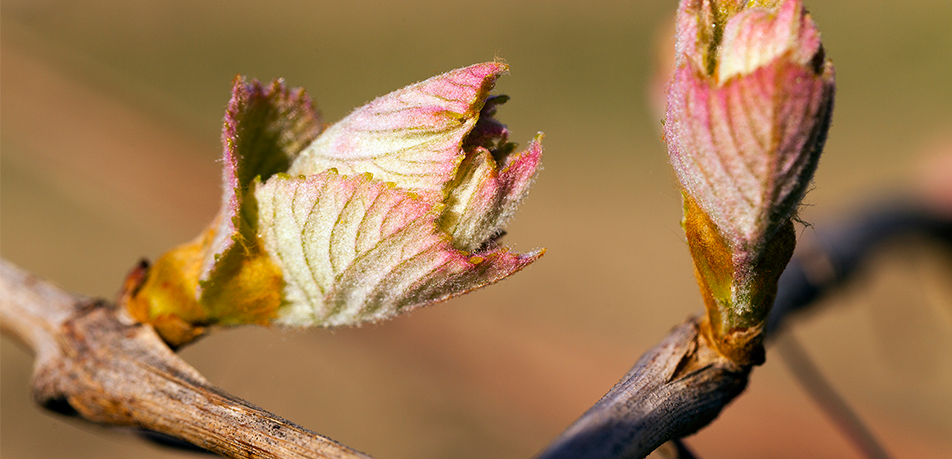Budbreak

During the month of March and after sap bleeding, temperatures begin to rise (to about 10°C), providing the right conditions for the onset of budbreak.
The buds emerge, announcing the imminent growth of green shoots. An announcement that bears the promise of new fruit and the harvest to come.
[[{"fid":"17567","view_mode":"default","fields":{"format":"default","alignment":"","field_file_image_alt_text[und][0][value]":false,"field_file_image_title_text[und][0][value]":false},"type":"media","field_deltas":{"1":{"format":"default","alignment":"","field_file_image_alt_text[und][0][value]":false,"field_file_image_title_text[und][0][value]":false}},"link_text":null,"attributes":{"height":480,"width":480,"class":"media-element file-default","data-delta":"1"}}]]
When and how?
This usually happens in March. When temperatures reach an average of 10°C (known as the growth threshold), the cellular activity of the buds becomes apparent. This marks the beginning of the first springtime stage of the grapevine's growth cycle.
During this process, the nascent buds shed their “down,” a woolly layer that protects them during the winter.
During this stage in its development, the vine is particularly vulnerable to the dreaded spring frost. This is why winegrowers rely on late pruning, which delays budbreak, to try and prevent greater ills. Alternately, they use “heaters” to prevent a long, drawn-out cold stretch.
[[{"fid":"17568","view_mode":"default","fields":{"format":"default","alignment":"","field_file_image_alt_text[und][0][value]":false,"field_file_image_title_text[und][0][value]":false},"type":"media","field_deltas":{"2":{"format":"default","alignment":"","field_file_image_alt_text[und][0][value]":false,"field_file_image_title_text[und][0][value]":false}},"link_text":null,"attributes":{"height":746,"width":1438,"style":"height: 259px; width: 500px;","class":"media-element file-default","data-delta":"2"}}]]
Cabernet Sauvignon vine at budbreak in the Mas La Plana vineyard (Penedès)
What factors come into play?
The ideal moment for budbreak depends on climatic, varietal, biological and cultural factors.
- The climatic factor is crucial: Air temperature is the main factor that triggers the biological activity of the buds. One could describe the cause of budbreak as being the cumulative effect of the daily impact of temperature in the winter and early spring.
- Varietal influence also plays a key role in estimating an approximate date, because not all varieties undergo budbreak at the same time. For example, Riesling is among the latest-budding varieties.
- Biological factors refer to vigor and the exact position of the bud along the cane. If vines experienced excessive vigor during the previous growth cycle, or didn't store up sufficient reserves, budbreak can occur later than usual. Likewise, the bud’s position on the cane and vine is decisive. Budbreak begins at either end of the pruned canes and gradually moves down the plant to the trunk.
- With cultural factors, we mean activities carried out by the human element, which are designed to influence the time of budbreak. One example is late pruning to delay budbreak and prevent the effects of the dreaded spring frost, a common practice in cold regions.
In budbreak, we once again find an analogy that makes the vine such a perfect metaphor for the human lifecycle. A crop as old as civilization itself, which still manages to surprise us and whose fruit delights both palate and soul.
An ingenious feat of nature, shaped by the human hand, the climate and the earth. A gift in the earliest of times; a loyal companion whose love reflects the amount of care we give it. The fermented essence of the earth. The wise passage of time. The living nectar of an eternal fruit. Long live the vine.
